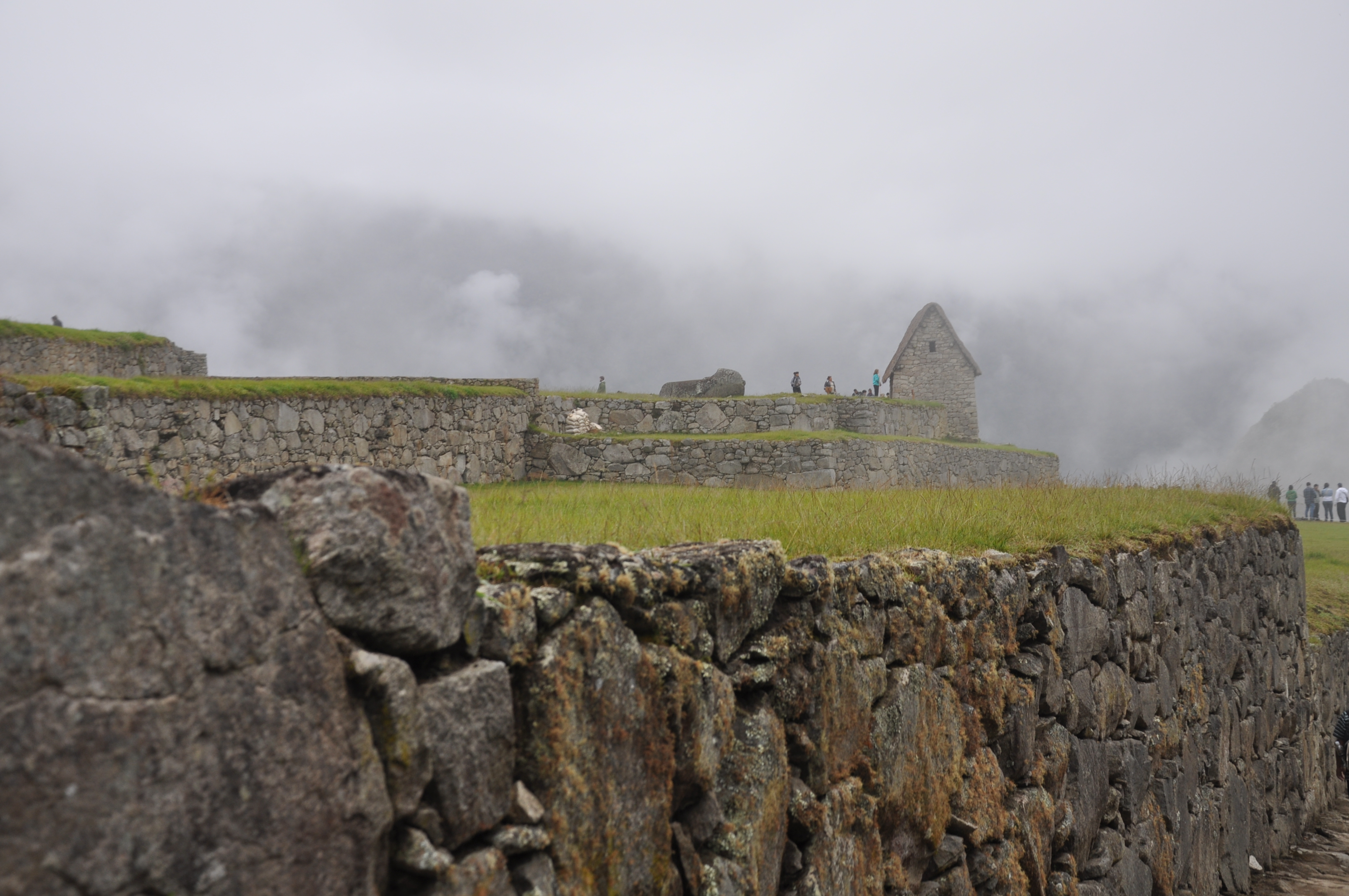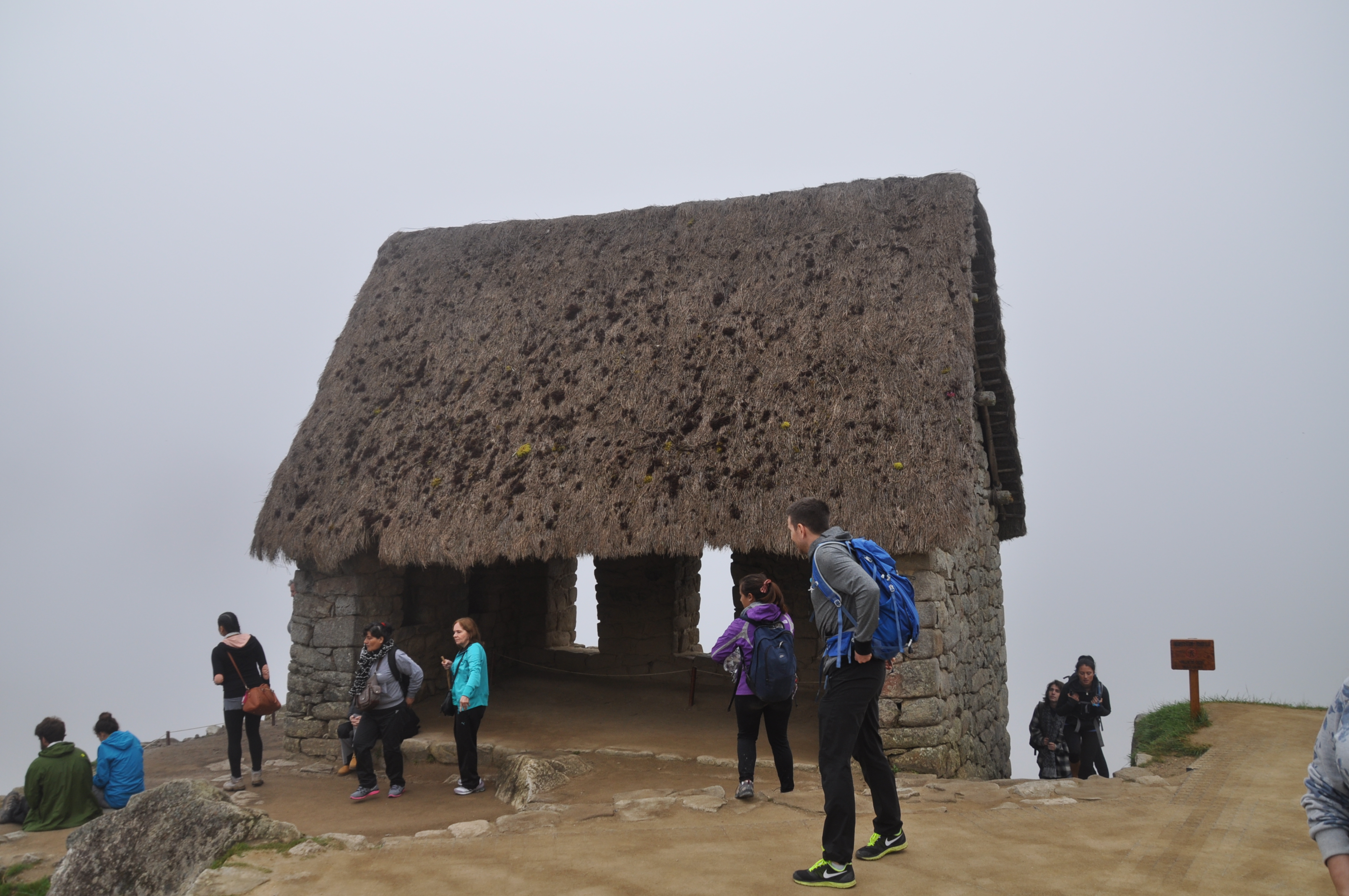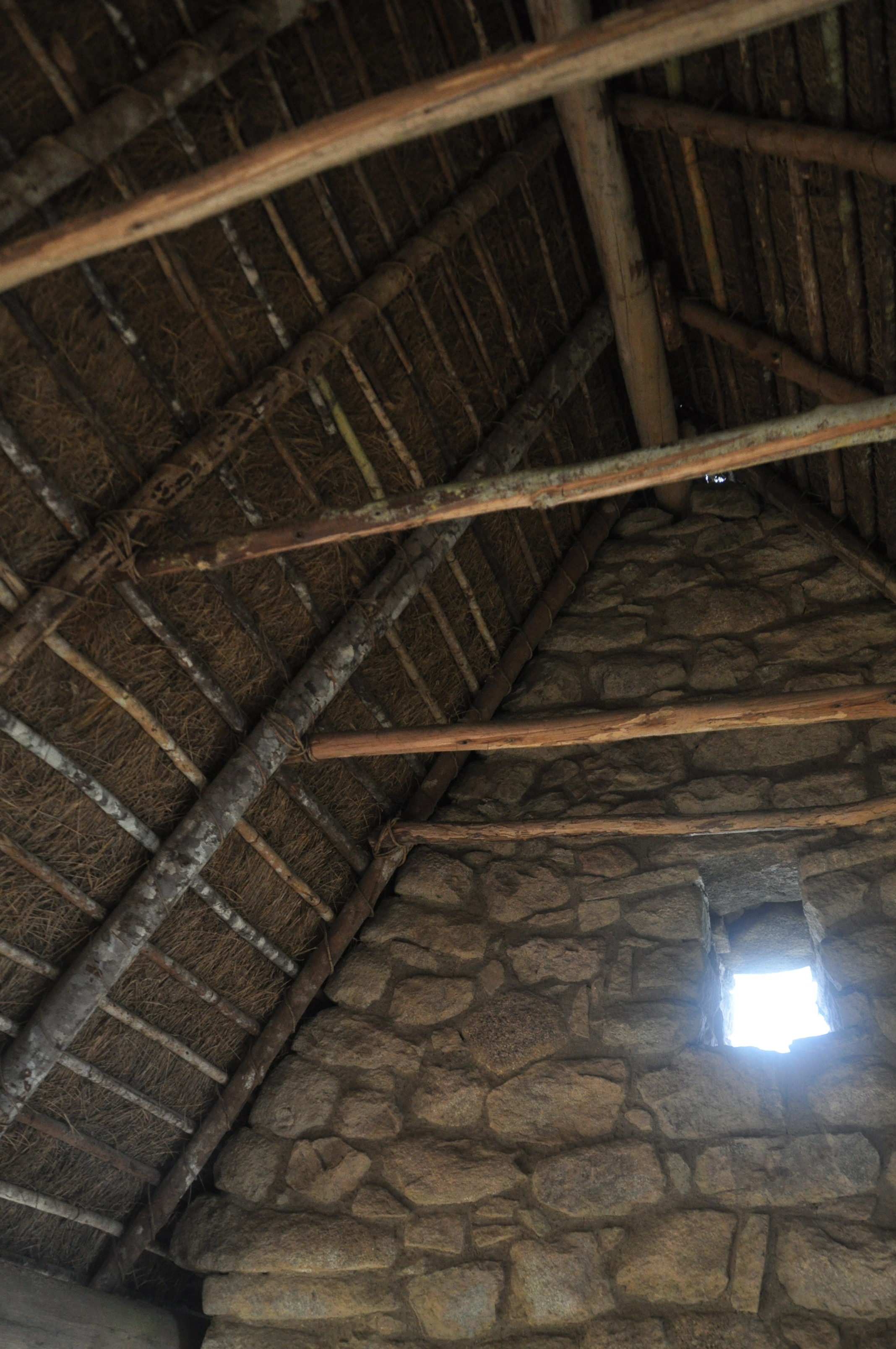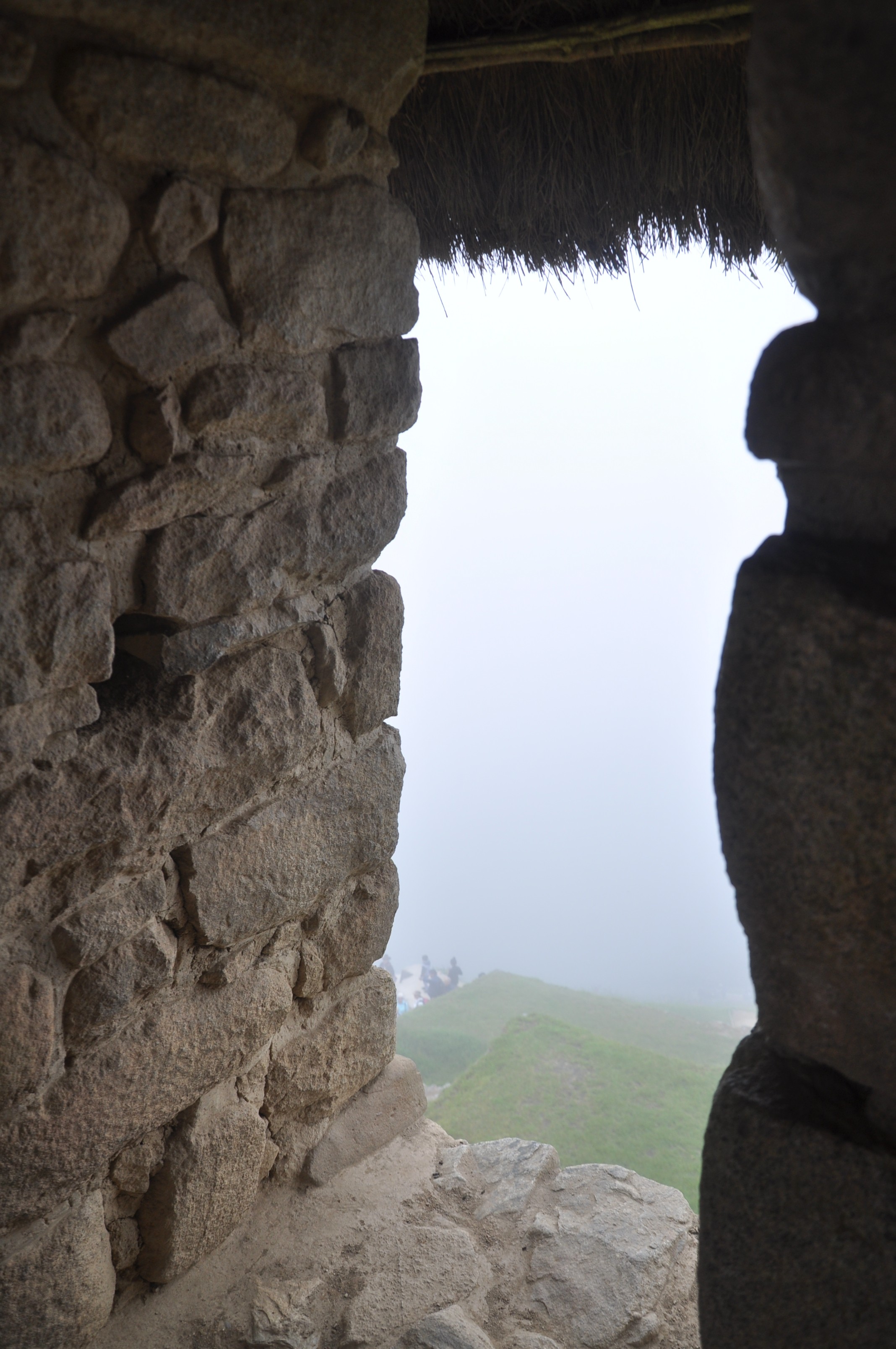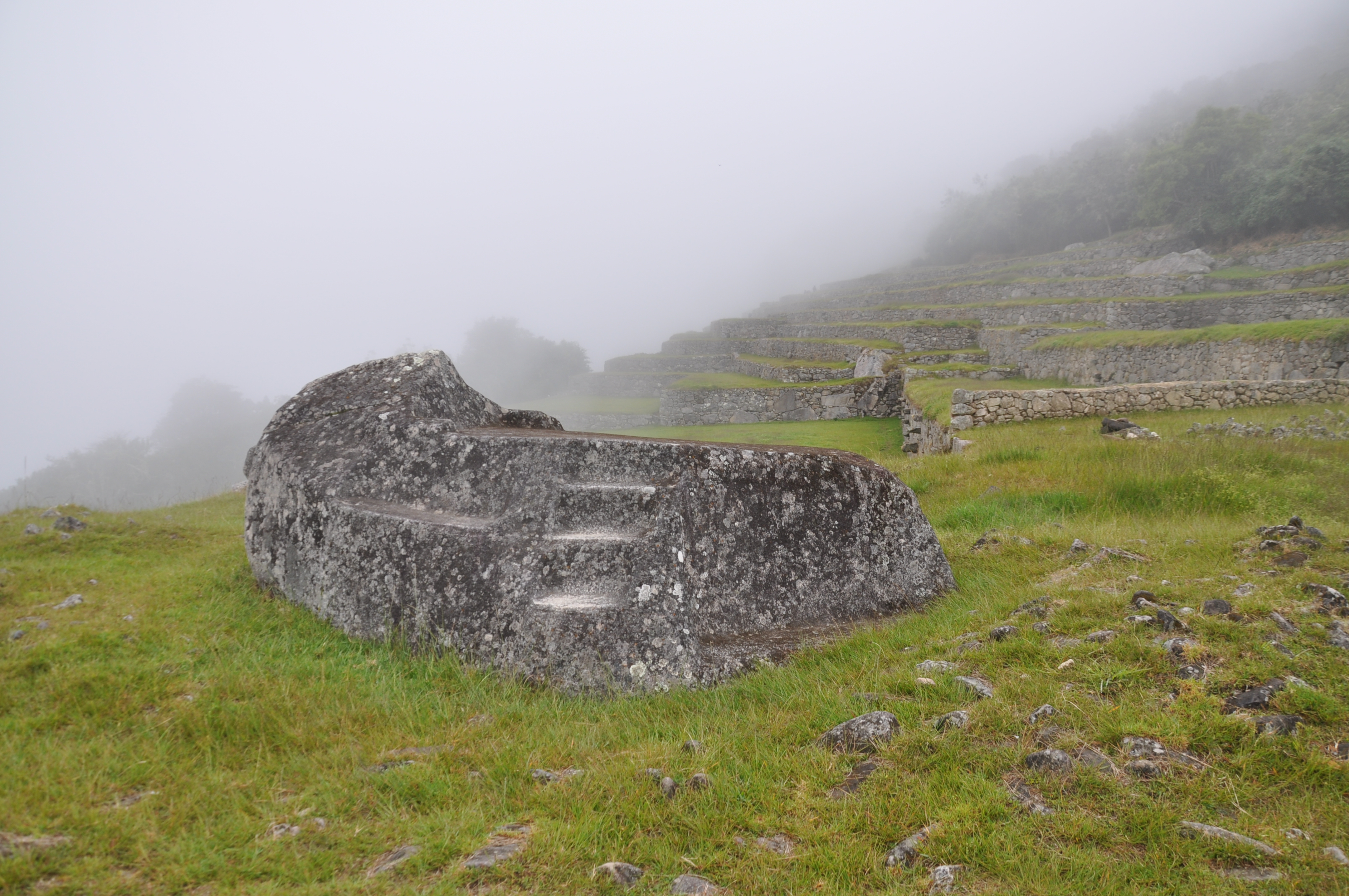Overview
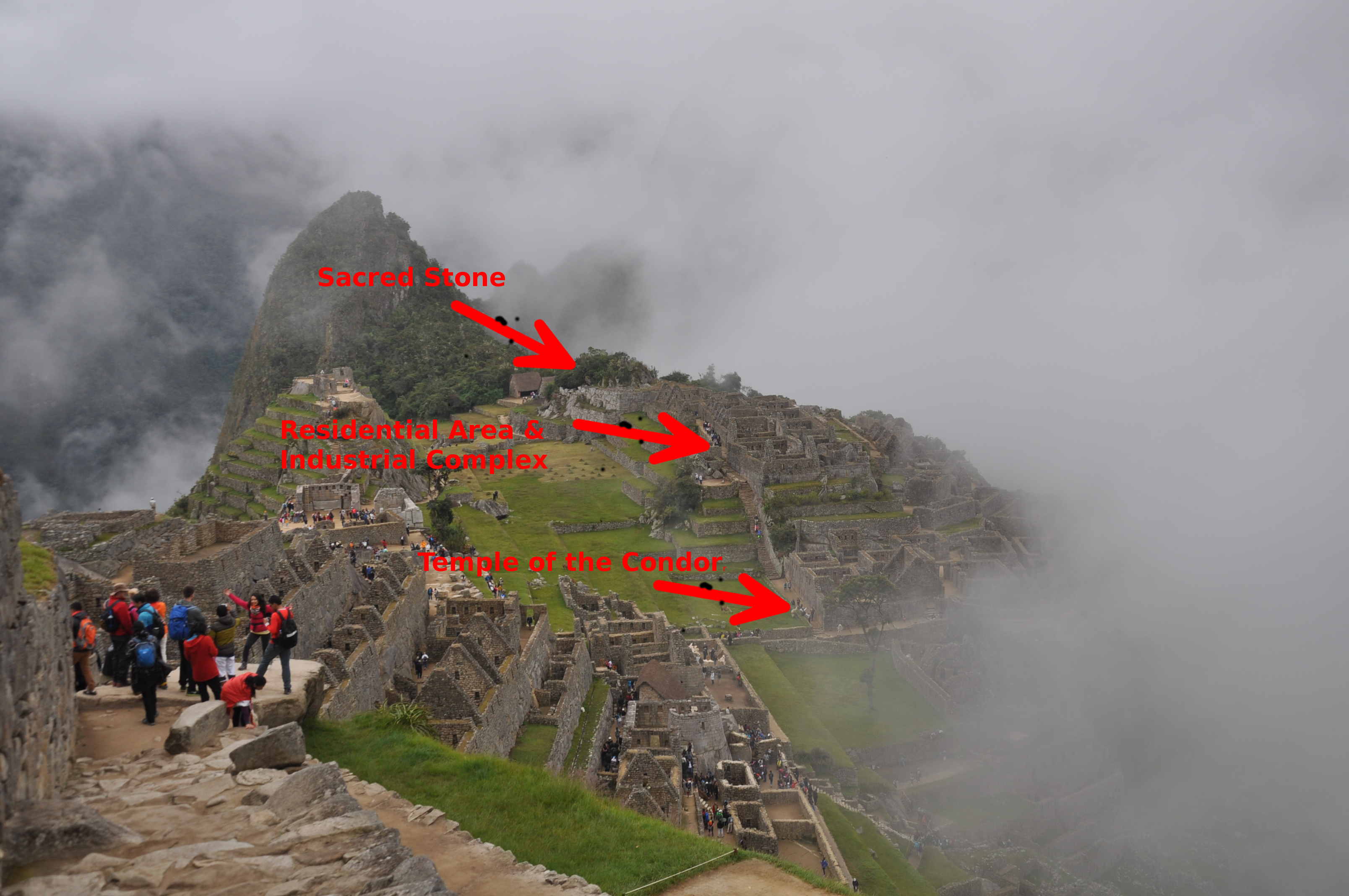
Sacred Stone
The form of this large stone near the entry to Wayna Picchu resembles that of the mountain behind it. As stones resembling mountains could be determined on other places as well, these apparently had a religious or ceremonial function for the Inca.
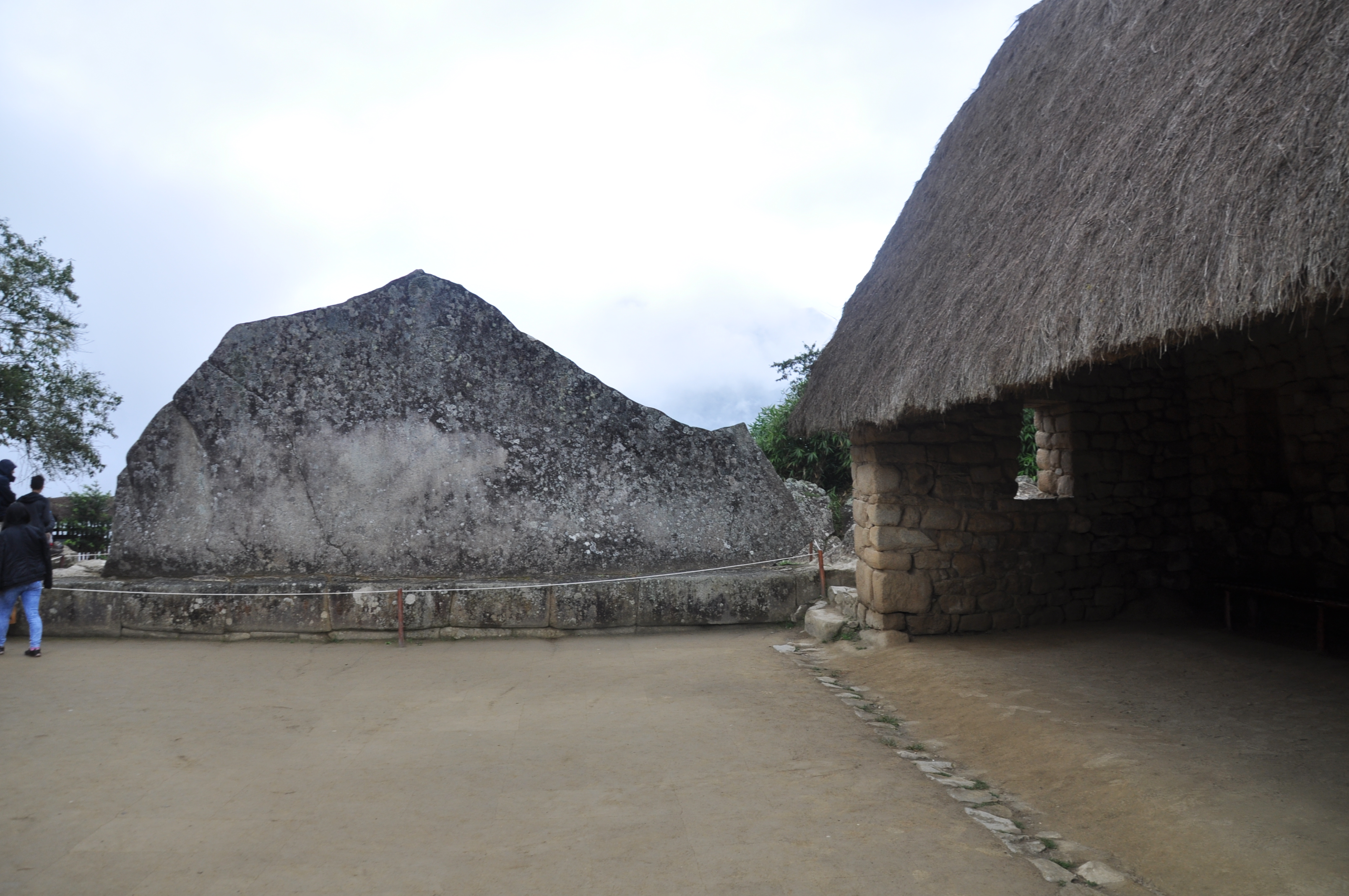
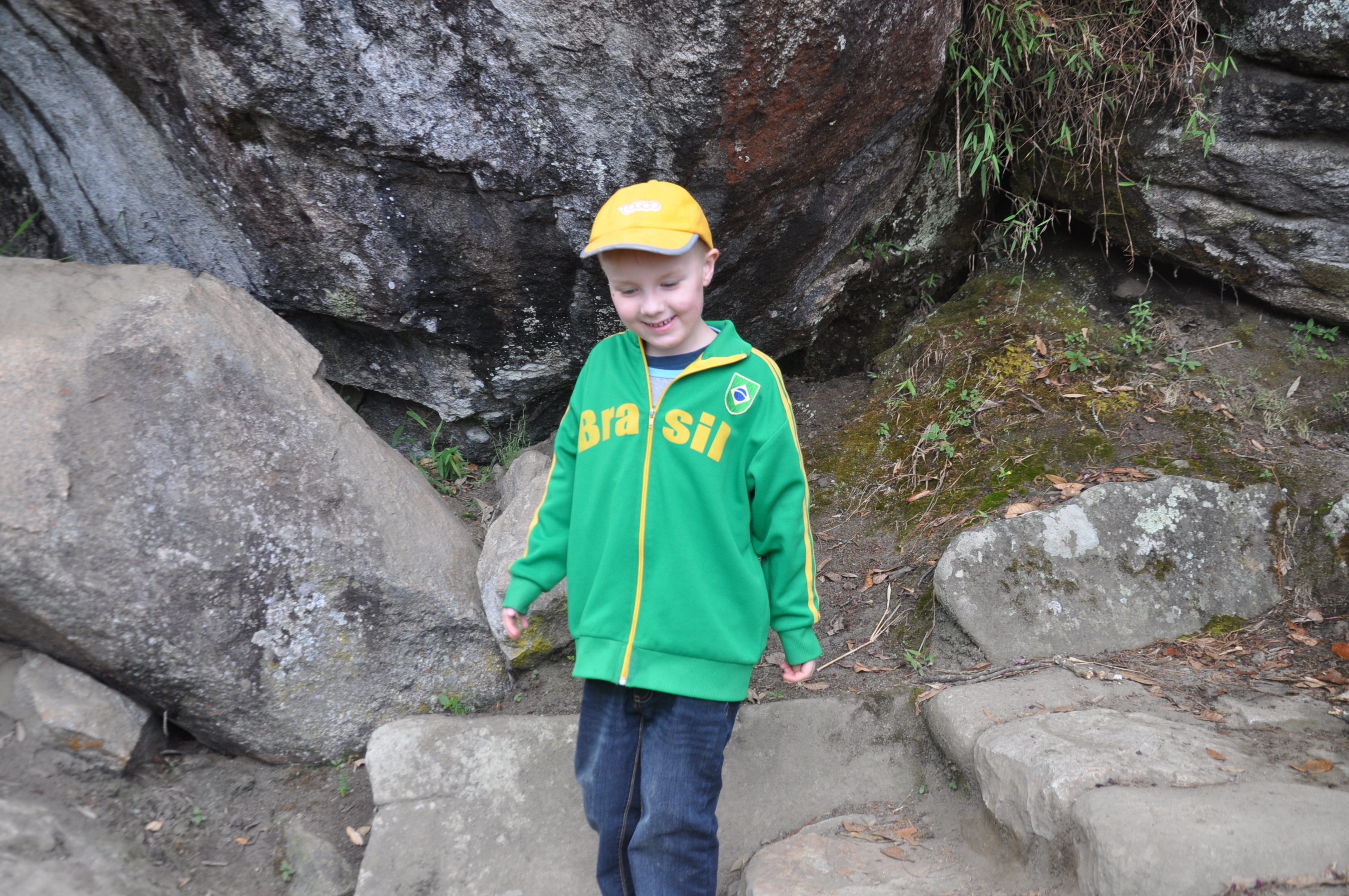
Industrial & Residential Zone
In the South-Eastern Edge of Industrial Zone there was a building with 2 bowls chiseled in the ground. As I learned from attending a tour guide addressing his group, these were water mirrors that were aligned with the windows and a marker stone to represent astronomical events (summer/winter solstice).

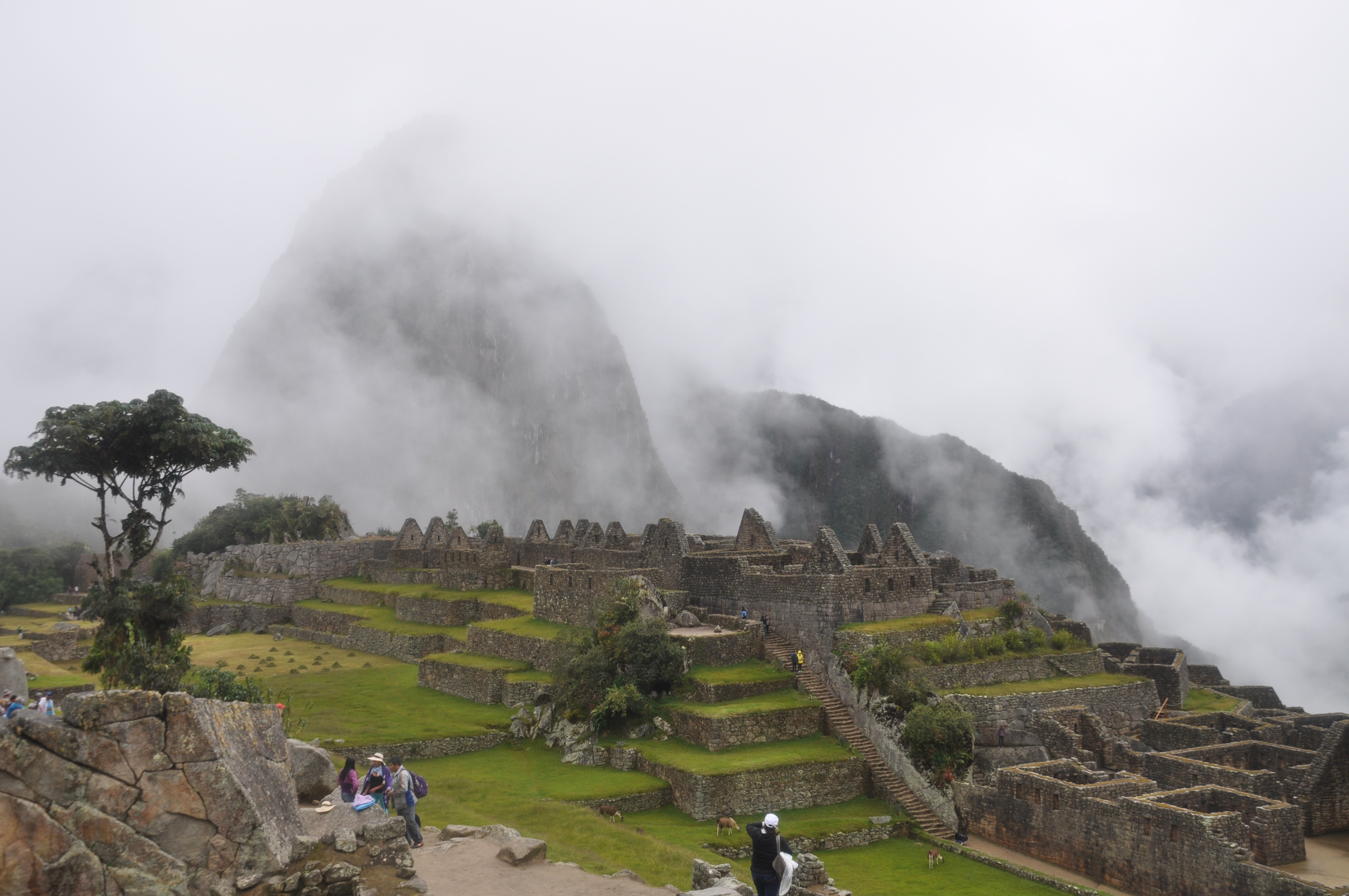
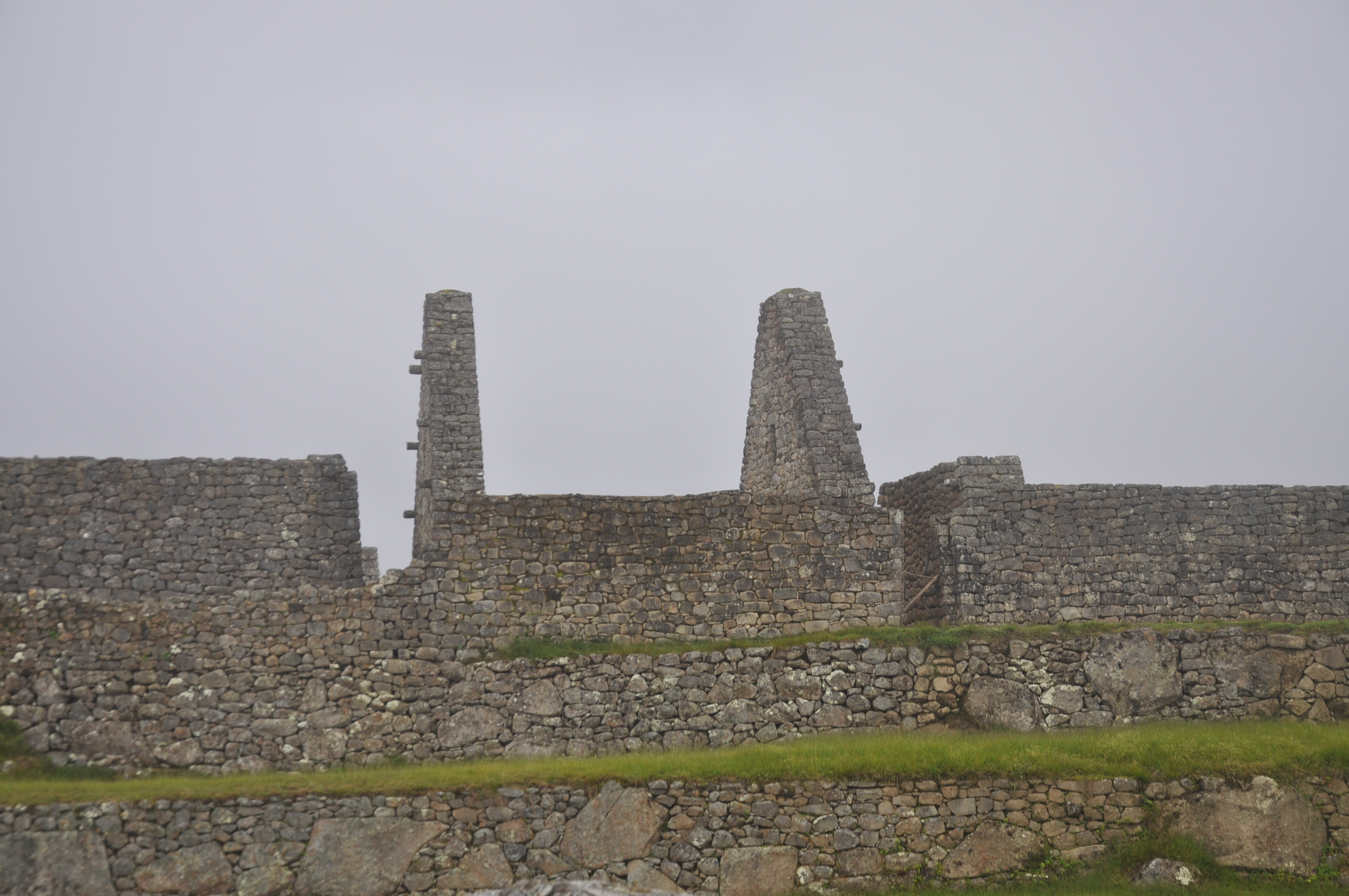
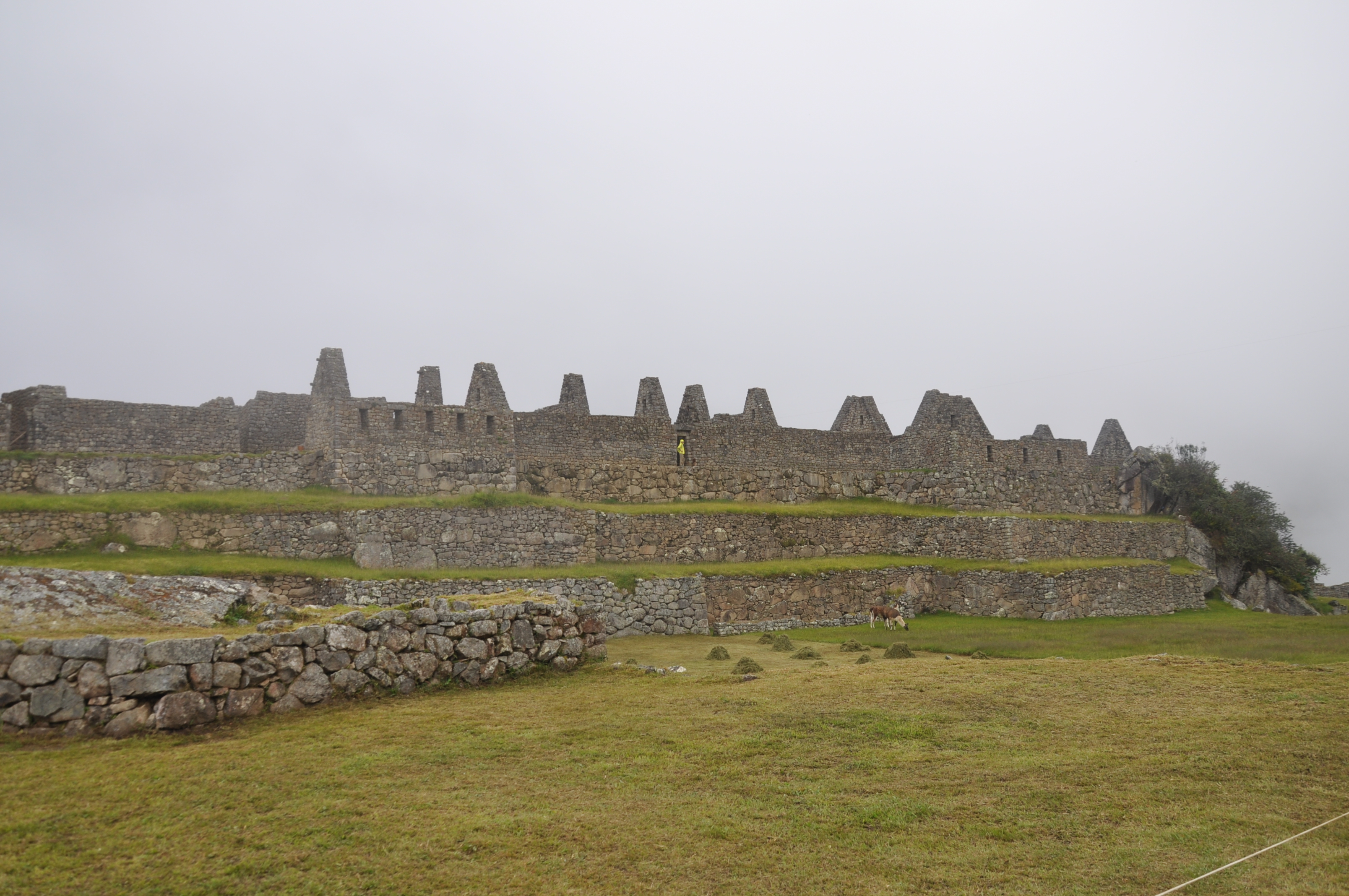


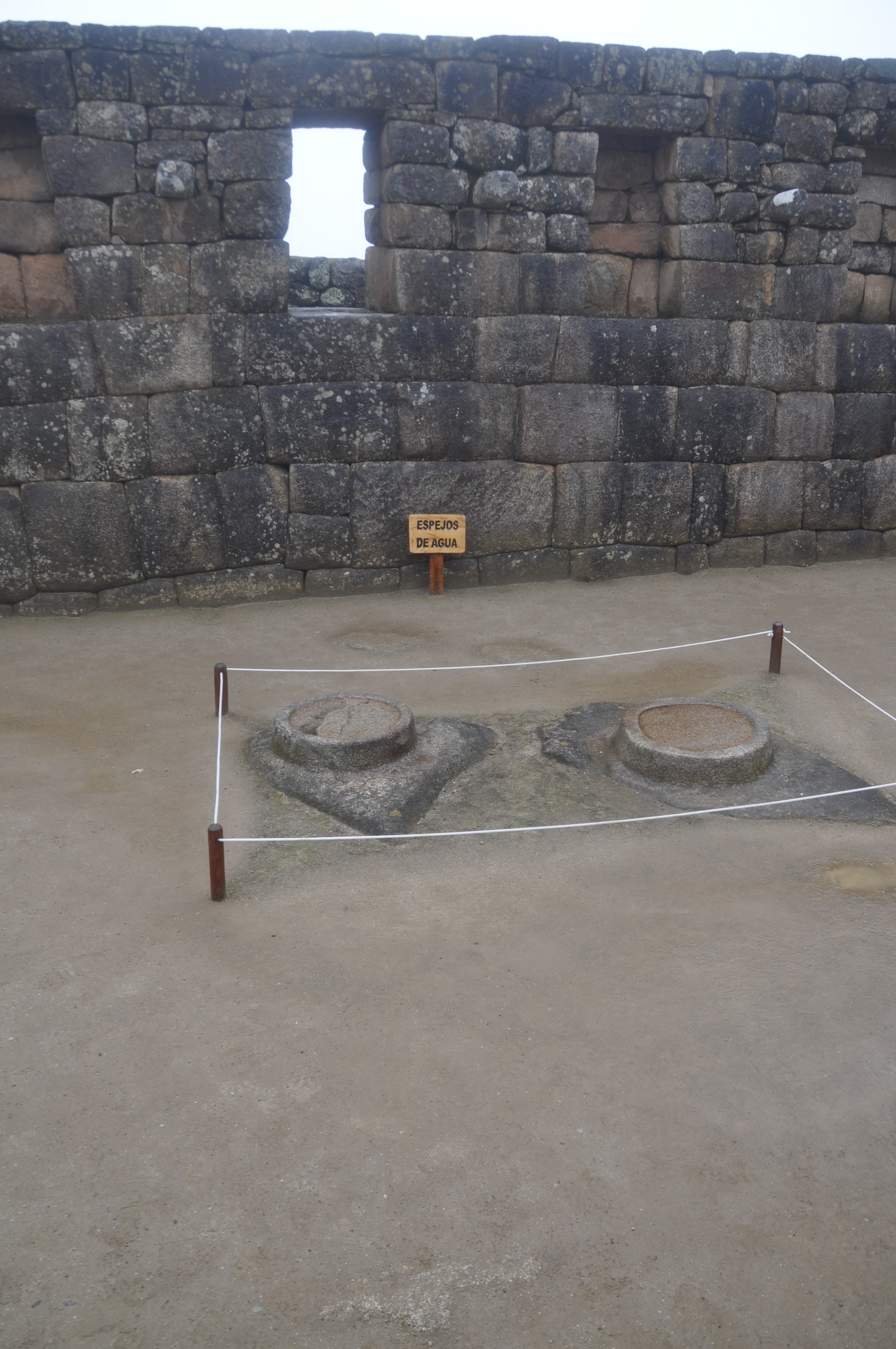
Temple of the condor
On the floor, a rock was carved giving it the shape of a condor (arguably, it requires some imagination). Historians speculate whether it was used as sacrificial altar. Just next to it is a small cave that allegedly contained a mummy. The condor is in the middle of a complex with many small room, human-sized niches niches, and passageways. Historians have documented Inca prison sites that look similar. Hence, this place was most likely a prison.
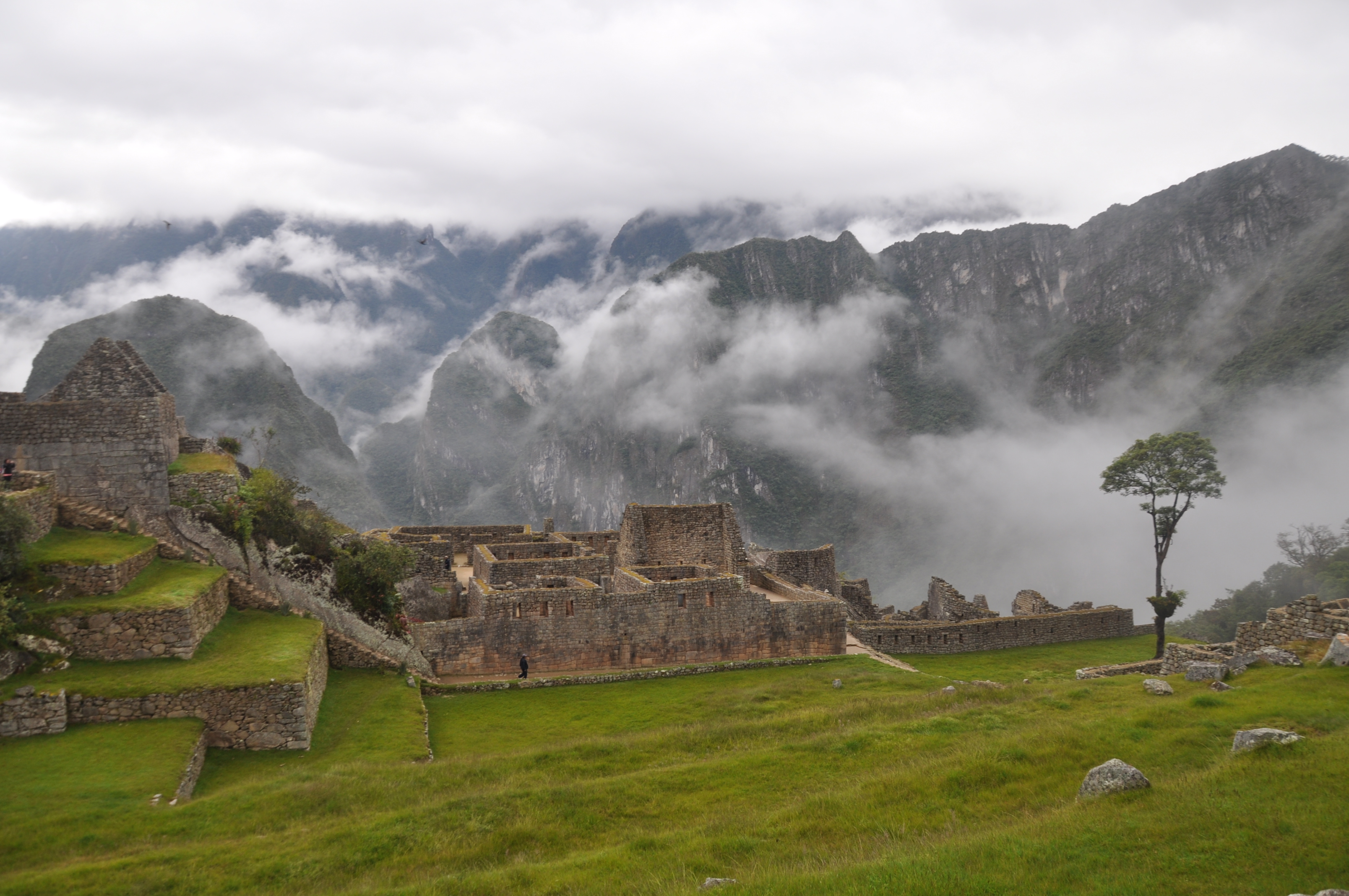
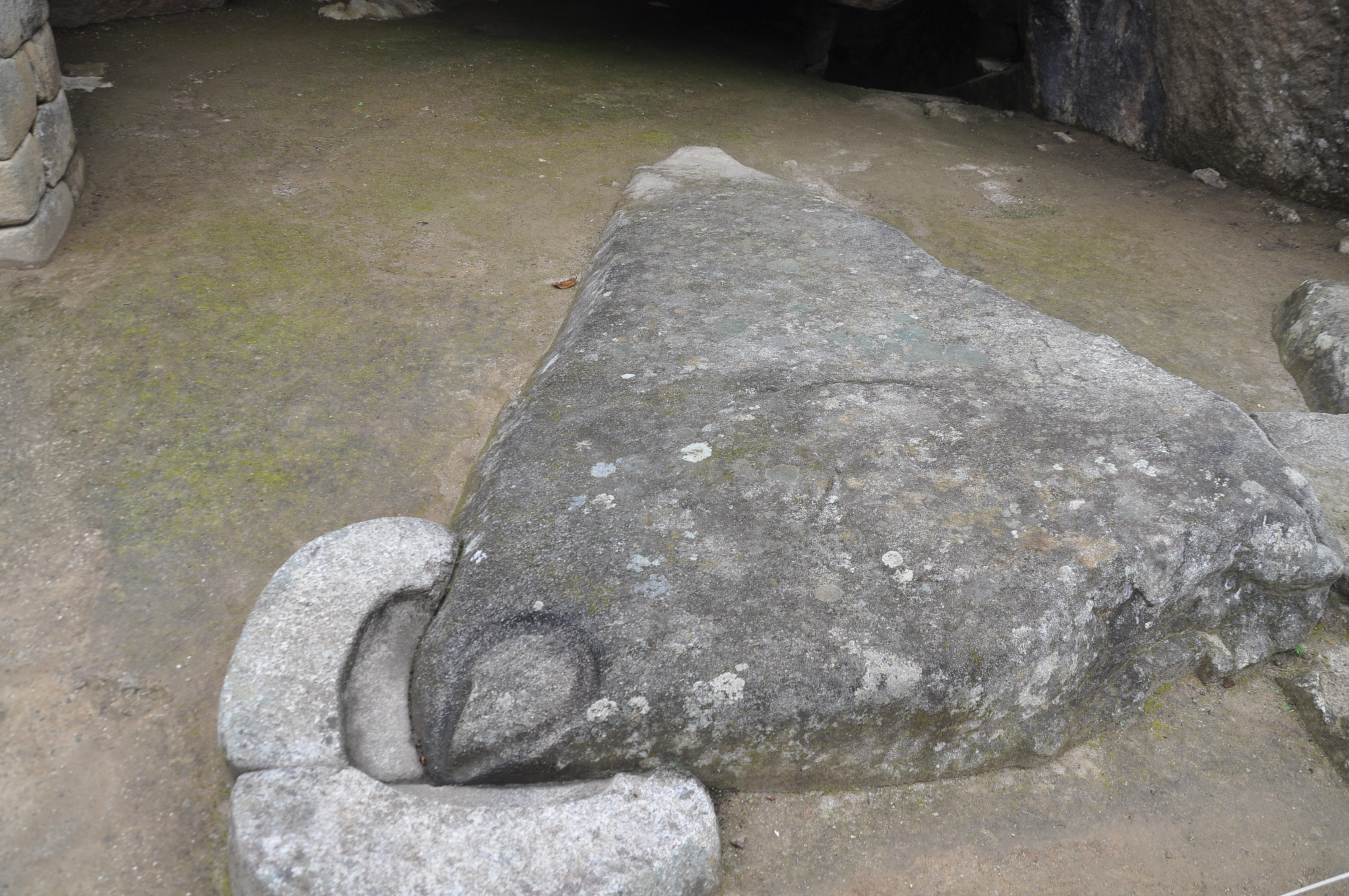
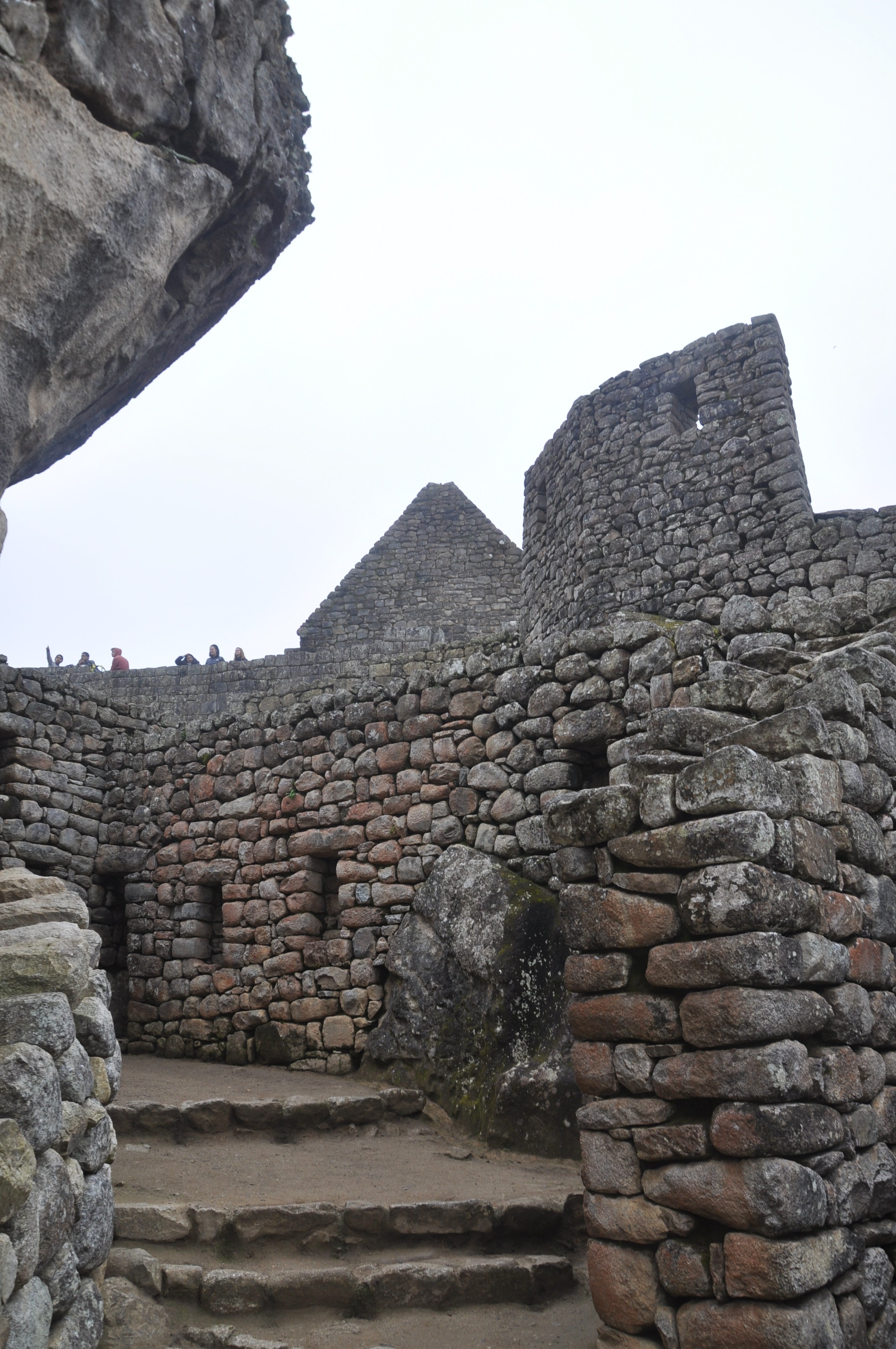
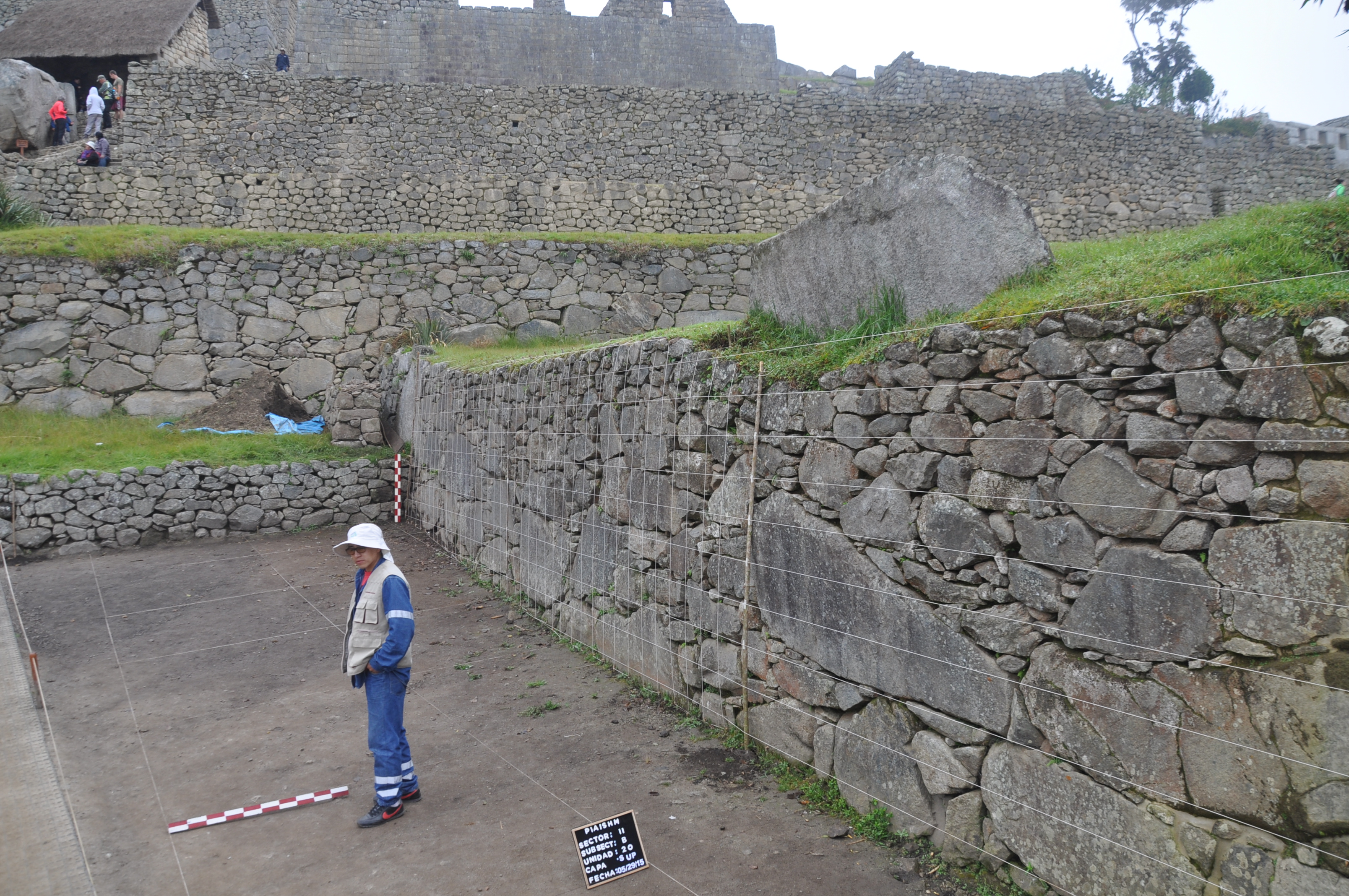
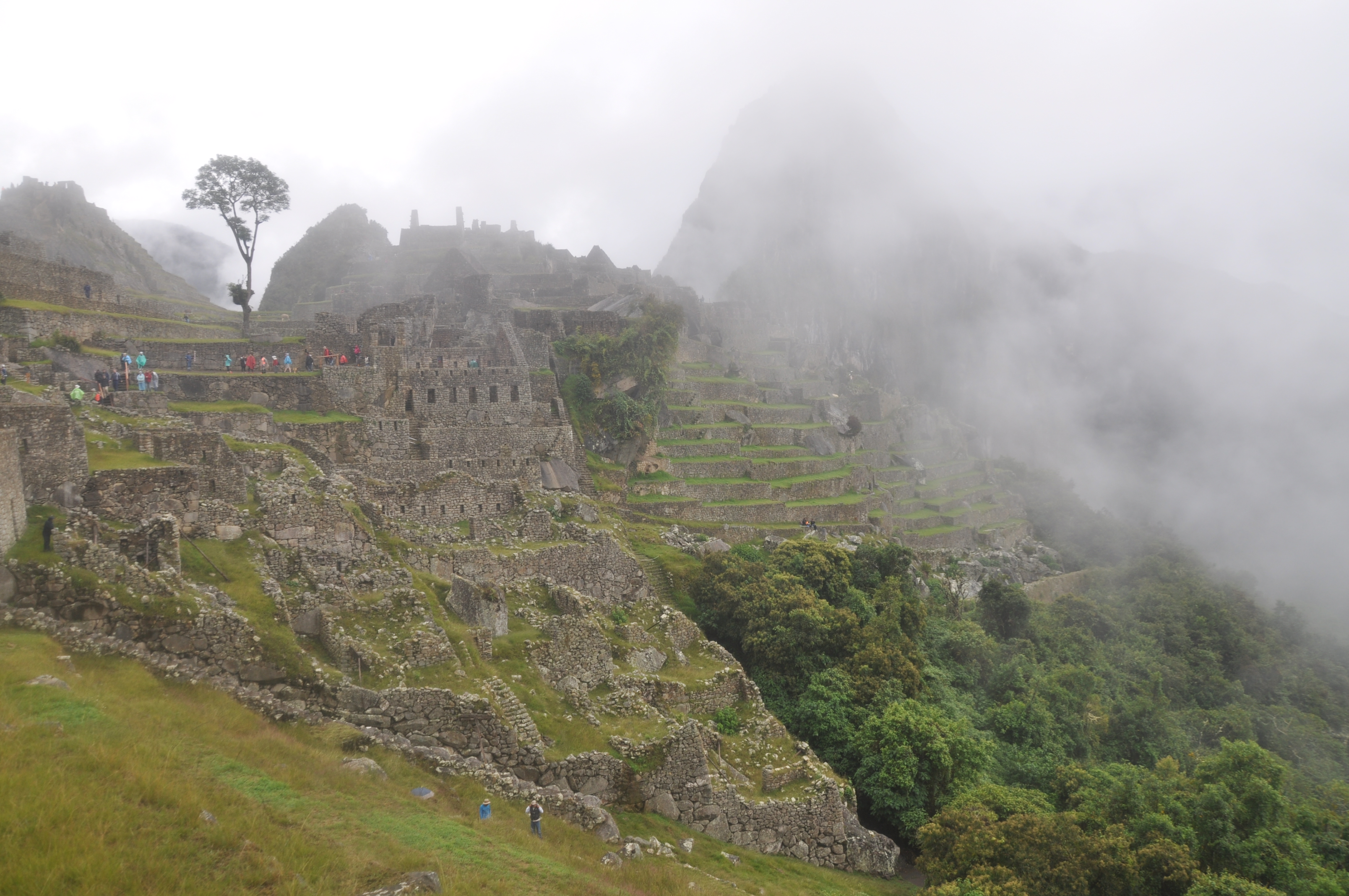
City Entrance & City Wall
The wall surrounds only parts of the city, and is not really fortified. That suggests that the planner and builders of the city did not foresee military conflicts. Scholars hence suggest that Machu Picchu was a sacred city and a divine place for the Incas.
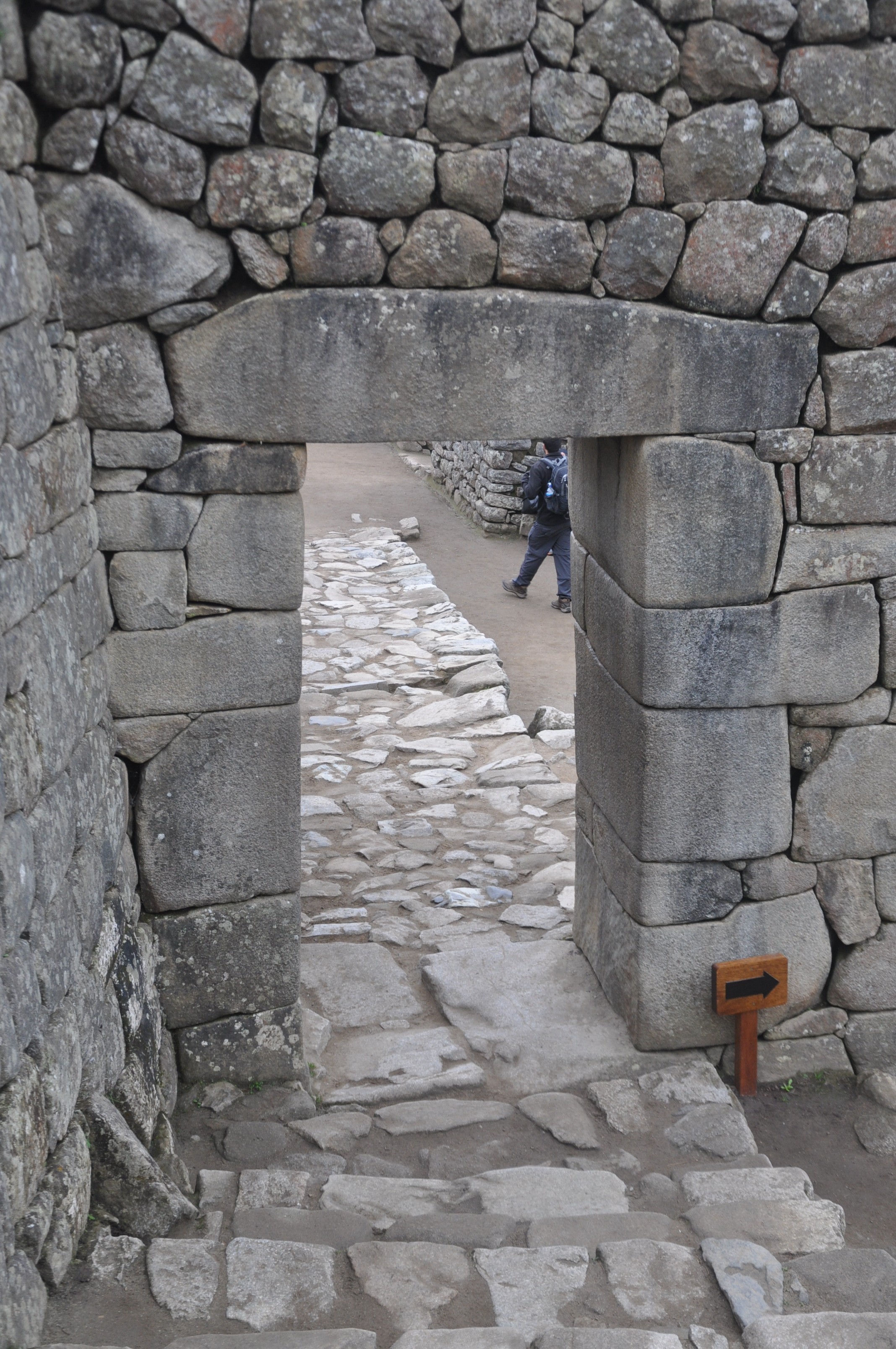
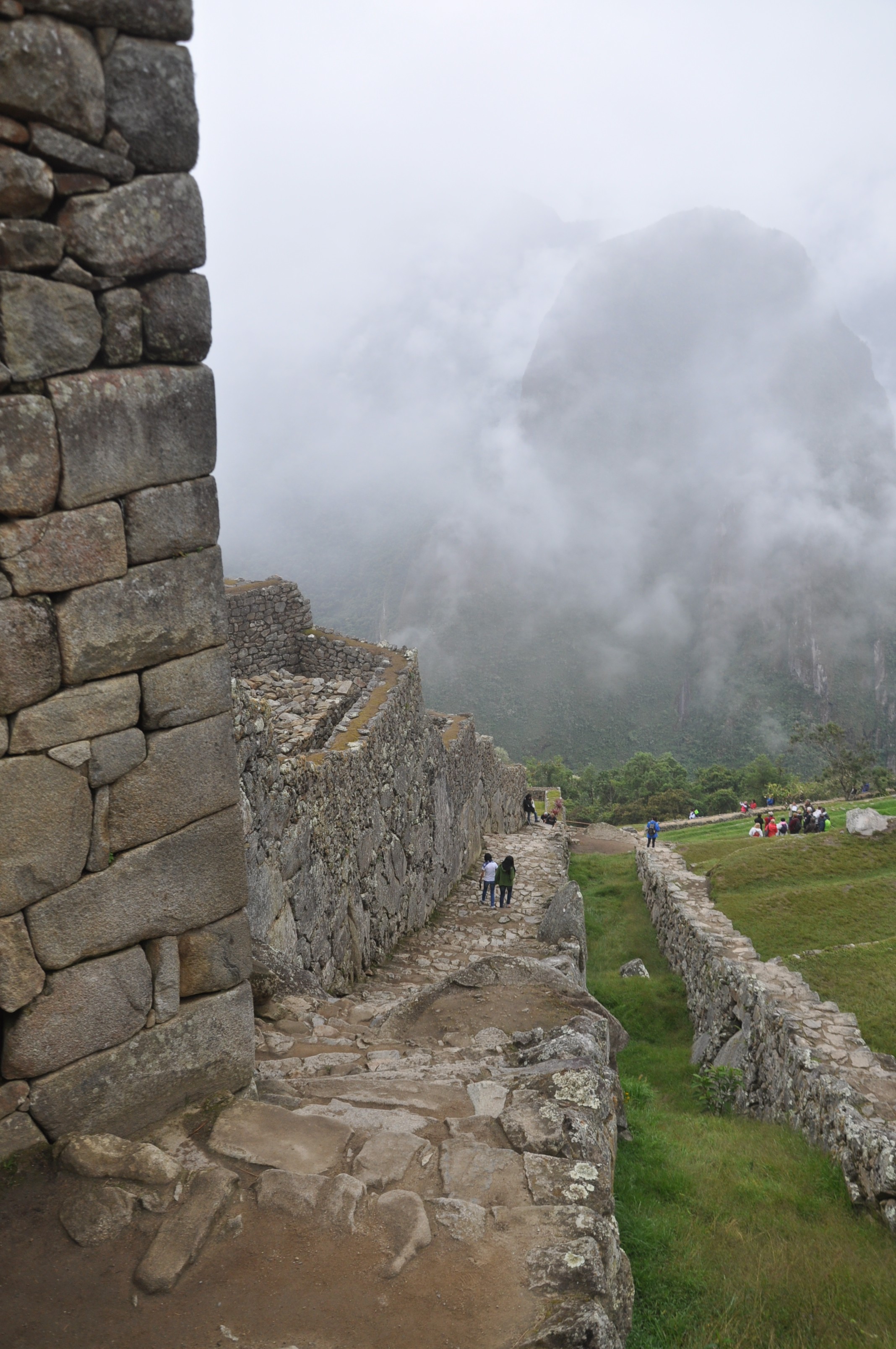
House of the Guardians or The House of the Care Taker of the Funerary Rock
The house is detached from the rest of the city and situated above it. It is one of the few buildings that was restored with a thatched roof. Its location above the city makes it a good view point which gives it its first name. The second name was derived from the carved rock behind the hut that may been used for the mummification process. The Inca trail coming from the sun gate and ending at the gates of Macchu Picchu passes by just below the building.
